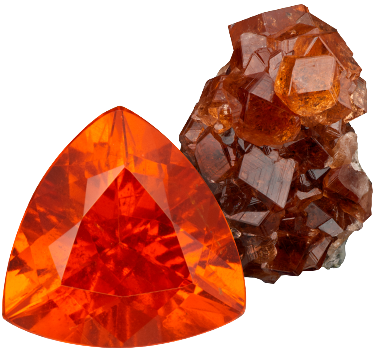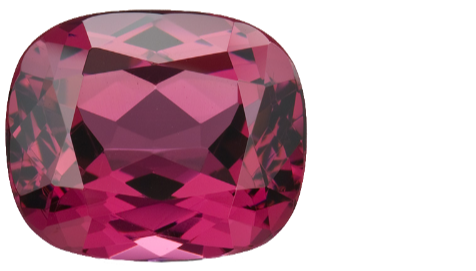Your Bag is Empty
Book an Appointment
January is the first month for most people on the planet. It can be a stark month—cold mornings, gray skies, and a sense of beginning anew. Garnet is a different kind of energy. Deep, strong, and full of quiet fire, it’s not a loud stone. But it holds its ground.
The month of January and the stone garnet carry opposite energy. Nonetheless, the answer to the question, "What is January birthstone?" is garnet. Most recognize it by its intense red, but the gem exists in more colors than people expect—flashes of green, orange, even purple in rare cases. Still, it’s the rich red tones that have linked this stone to January for centuries.

The January birthstone isn’t really about winter, or even about colour. It’s about staying rooted when everything else is shifting.
Garnet has history, and plenty of it.
The ancient Egyptians buried the January birthstone with their dead, believing it helped guide souls in the afterlife. In Rome, garnets were set in signet rings and pressed into wax seals that marked important letters and legal orders.
In the Middle Ages, soldiers carried pieces of garnet into battle—not for status, but for protection. And by the time we reach the 18th and 19th centuries, red Bohemian garnets were everywhere: in brooches, in heirlooms, in wedding sets passed quietly across generations.
What keeps showing up in every age is belief. Across cultures, January birthstone was thought to offer something personal—protection from danger, clarity of purpose, shelter from misfortune.
It’s no surprise, then, that this became the birthstone for January. Something strong, steady, and enduring, right at the year’s edge.

There’s something direct about garnet. It’s often described as a stone of truth, courage, or friendship—but it isn’t aggressive or overwhelming. It doesn’t dazzle. It holds a steady kind of power.
In symbolic terms, January birthstone is tied to the heart—so love, yes, but not just romance; loyalty, groundedness, and inner strength. Many people wear January birthstones for grounding, some for emotional protection, and some just feel good with them close.
As a stone associated with beginnings, the January birthstone is also thought to help with focus and creativity—clearing out mental noise, helping people move forward with intention.

Most people think of garnet as one thing: ruby red, polished, and small. But in reality, the gem family is much more varied than that.
The classic January birthstone color is a deep, wine-like burgundy. But certain types of January birthstones can be bright orange, green (like tsavorite), or pink. Some even shift shade under light—from green to red, depending on the source of illumination.
A few key traits:
Despite its strength, the January birthstone isn’t indestructible. The stone can chip if it takes a sharp hit, and over time, surface scratches can build up if it rubs against harder materials in storage.
Caring for it is simple:
With minimal effort, January birthstone holds its fire for years. That’s part of its value: it ages well, with grace.
The January birthstone is easy to underestimate—but impossible to forget once it's truly seen. More than just a colour, more than just tradition, garnet offers the kind of staying power few things do—quiet, grounded, and deeply human.